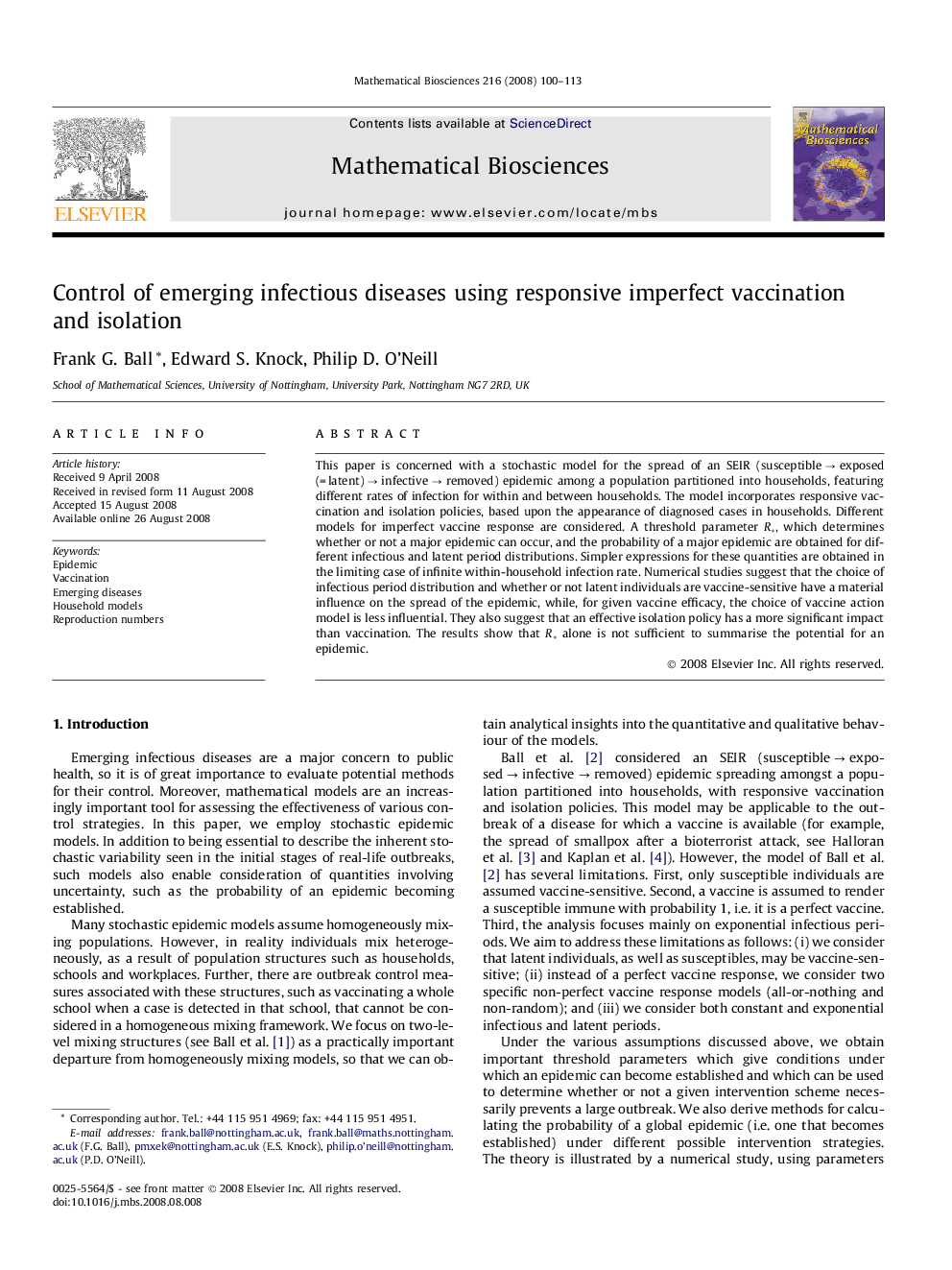| کد مقاله | کد نشریه | سال انتشار | مقاله انگلیسی | نسخه تمام متن |
|---|---|---|---|---|
| 4500755 | 1320020 | 2008 | 14 صفحه PDF | دانلود رایگان |

This paper is concerned with a stochastic model for the spread of an SEIR (susceptible → exposed (= latent) → infective → removed) epidemic among a population partitioned into households, featuring different rates of infection for within and between households. The model incorporates responsive vaccination and isolation policies, based upon the appearance of diagnosed cases in households. Different models for imperfect vaccine response are considered. A threshold parameter R*, which determines whether or not a major epidemic can occur, and the probability of a major epidemic are obtained for different infectious and latent period distributions. Simpler expressions for these quantities are obtained in the limiting case of infinite within-household infection rate. Numerical studies suggest that the choice of infectious period distribution and whether or not latent individuals are vaccine-sensitive have a material influence on the spread of the epidemic, while, for given vaccine efficacy, the choice of vaccine action model is less influential. They also suggest that an effective isolation policy has a more significant impact than vaccination. The results show that R* alone is not sufficient to summarise the potential for an epidemic.
Journal: Mathematical Biosciences - Volume 216, Issue 1, November 2008, Pages 100–113